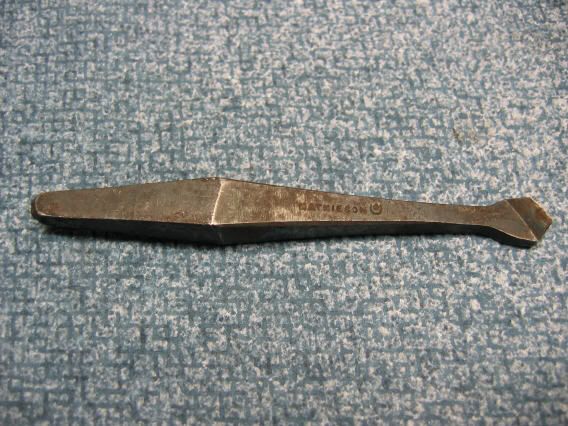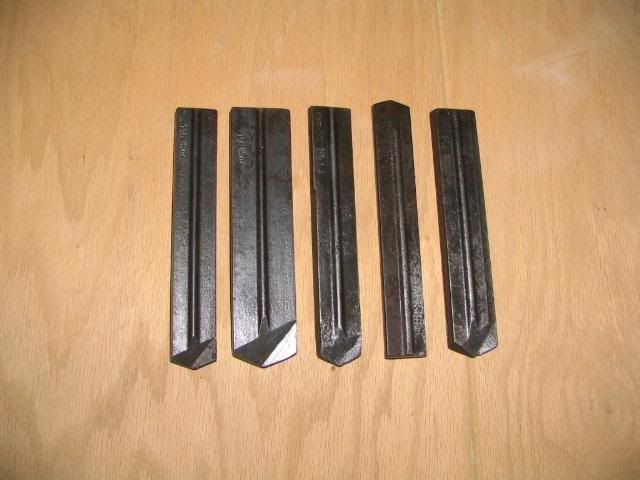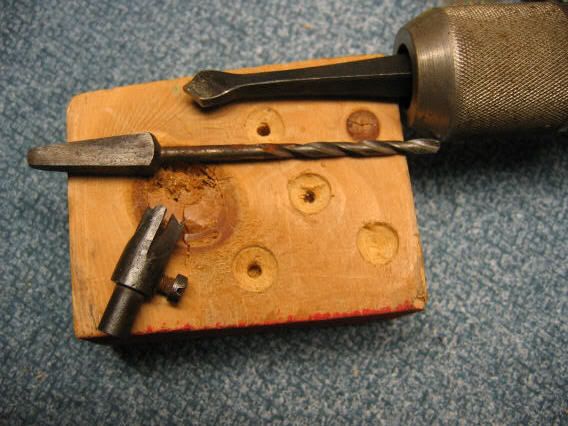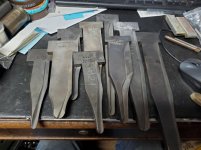JST:
I'm a bit surprised, actually, that it worked that well in soft pine. Try it in some harder stuff, right up to mild steel, and I think you'll be pleasantly surprised.
For those who think it might be a drill bit, I'd scan a catalog page if my scanner was working, or shoot one if I had a digital camera, but for now you'll have to take my word for it that Marples and Preston sold them as countersinks.
It wouldn't serve very well as a drill bit. As you sharpened it back, it would lose its diameter. Unlike the track bits, which have parallel sides and keep their size as they are sharpened.
There are a couple of advantages against the rose countersink. One is in sharpening - all you ever have to file or grind or hone is the bottom surface. Sharpen a rose countersink a few times, and it's not very likely that all cuting edges are still cutting. Another is in the cutting angle - whereas a rose countersink pretty much scrapes the work, this one has a hook to the cutting edge that allows it to slice rather than scrape.
Hold on - I just found a Mathieson catalog reprint that I thought I had. Alexr. Mathieson & Sons, Ltd., Saracen Tool Works, East Campbell Street, Glasgow. Eighth Edition, 1899. Page 40 has three different countersinks:
1071 - Countersinks, Cast Steel, Black, Flat Head, for Iron, 4/6 doz.
1072 - Countersinks, Cast Steel, Black, Snailhorn, for Wood, 5/ doz.
1073 - Countersinks, Cast Steel, Black, Rosehead, for Brass, 5/ doz.
Sizes stocked are: - Small, 7/16 full; Mid, 9/16 bare; Large, 5/8 full
The one JST pictured is the 1071, for iron. The Snailhorn is a full cone like the Rosehead, but with only a single flute curving through it.
They also show number 1074 Brace Drill Bits, which are somewhat like this countersink but longer and without the hook at the cutting edge. Doesn't specify whether for wood or iron. They wouldn't lose their size quite as quickly when you sharpened them back as would the countersink.
The crescent with 8-point star was their trademark for Best Quality goods. For Second Quality, they used a crescent with a cross, or Crossmark Keen & Co., Glasgow. For Third Quality, they used a large G with Tertius Keen & Co.
The Scots pound was worth $5.00 US in 1899. Which made the shilling, at twenty to the pound, worth $0.25, and the pence, at twelve to the shilling, worth about $0.02.
And that, my friends, is my $0.02 worth.
John,
whose great-great-grandfather was a mechanical engineer in the Hutchesontown area of Glasgow just across the Clyde from Mathieson and may very well have worked there










